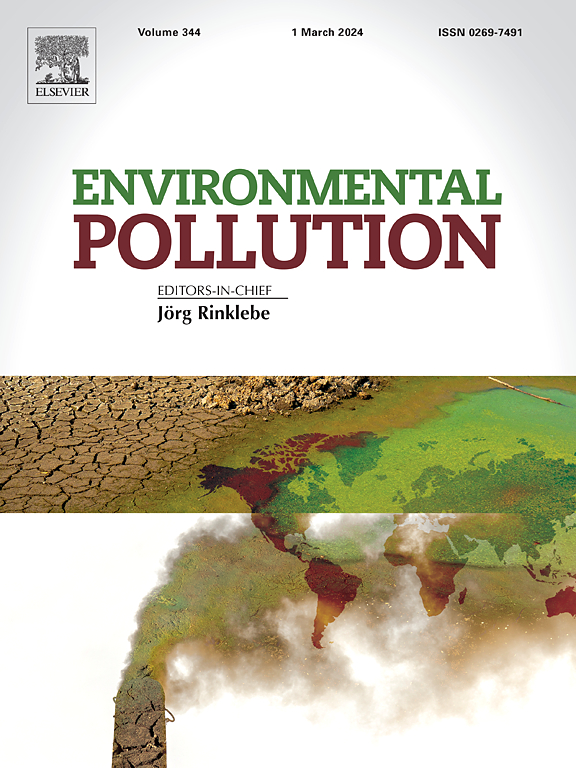时空立方体揭示中国国家公园不断升级的光污染:边界几何和人类活动的影响(1992-2021)
IF 7.6
2区 环境科学与生态学
Q1 ENVIRONMENTAL SCIENCES
引用次数: 0
摘要
光污染已成为全球生物多样性和生态健康的重大威胁。随着城市化进程的加快,国家公园等保护区受到光污染的影响日益严重。利用时空立方体模型,分析了1992 - 2021年中国五大国家公园(大熊猫、东北虎豹、海南热带雨林、三江源和武夷山)光污染的时空格局及其与多因素的相关性。结果表明,5个公园的光污染指数均呈显著上升趋势。总夜间照明指数(TNLI)增加了52.2倍,平均夜间照明指数(MNLI)增加了1.1倍,最大夜间照明指数(MANLI)增加了0.6倍,总夜间照明面积(TNLA)增加了39倍。光污染受公园形状复杂性的影响,主要集中在边界区、窗区、聚落和道路。1公里缓冲区内外的建筑面积和人类活动对光污染水平的影响是显著的,特别是在公园外。研究结果为国家公园的光污染治理提供了重要参考,强调需要采取差异化管理策略,优化公园边界形态,设置外部缓冲带,控制公园内外的光污染,以有效保护生物多样性和生态健康。本文章由计算机程序翻译,如有差异,请以英文原文为准。

Space-time cube reveals escalating light pollution in China's national parks: impact of boundary geometry and human activities (1992–2021)
Light pollution has become a significant threat to global biodiversity and ecological health. With the increase of urbanization, protected areas such as national parks are increasingly affected by light pollution. Using the space-time cube model, the spatiotemporal patterns of light pollution and its correlation with multiple factors in five major national parks in China (Panda, Northeast Tiger and Leopard, Hainan Tropical Rainforest, Sanjiangyuan, and Wuyi Mountain) were analyzed from 1992 to 2021. The results show a significant upward trend in the light pollution indices across all five parks. The total nighttime lighting index (TNLI) experienced a 52.2-fold increase, while the mean nighttime lighting index (MNLI) rose by a factor of 1.1, the maximum nighttime lighting index (MANLI) by 0.6, and the total nighttime light area (TNLA) by 39-fold. Light pollution is influenced by park shape complexity and is mainly concentrated in boundary zones, window areas, settlements, and roads. The impact of building areas and human activities within park and outside the 1 km buffer zone on light pollution levels is significant, especially outside the park. These findings provide critical references for light pollution control in national parks, emphasizing the need for differentiated management strategies, optimizing park boundary shapes, setting up external buffer zones, and controlling light pollution both within and outside the parks to effectively protect biodiversity and ecological health.
求助全文
通过发布文献求助,成功后即可免费获取论文全文。
去求助
来源期刊

Environmental Pollution
环境科学-环境科学
CiteScore
16.00
自引率
6.70%
发文量
2082
审稿时长
2.9 months
期刊介绍:
Environmental Pollution is an international peer-reviewed journal that publishes high-quality research papers and review articles covering all aspects of environmental pollution and its impacts on ecosystems and human health.
Subject areas include, but are not limited to:
• Sources and occurrences of pollutants that are clearly defined and measured in environmental compartments, food and food-related items, and human bodies;
• Interlinks between contaminant exposure and biological, ecological, and human health effects, including those of climate change;
• Contaminants of emerging concerns (including but not limited to antibiotic resistant microorganisms or genes, microplastics/nanoplastics, electronic wastes, light, and noise) and/or their biological, ecological, or human health effects;
• Laboratory and field studies on the remediation/mitigation of environmental pollution via new techniques and with clear links to biological, ecological, or human health effects;
• Modeling of pollution processes, patterns, or trends that is of clear environmental and/or human health interest;
• New techniques that measure and examine environmental occurrences, transport, behavior, and effects of pollutants within the environment or the laboratory, provided that they can be clearly used to address problems within regional or global environmental compartments.
 求助内容:
求助内容: 应助结果提醒方式:
应助结果提醒方式:


